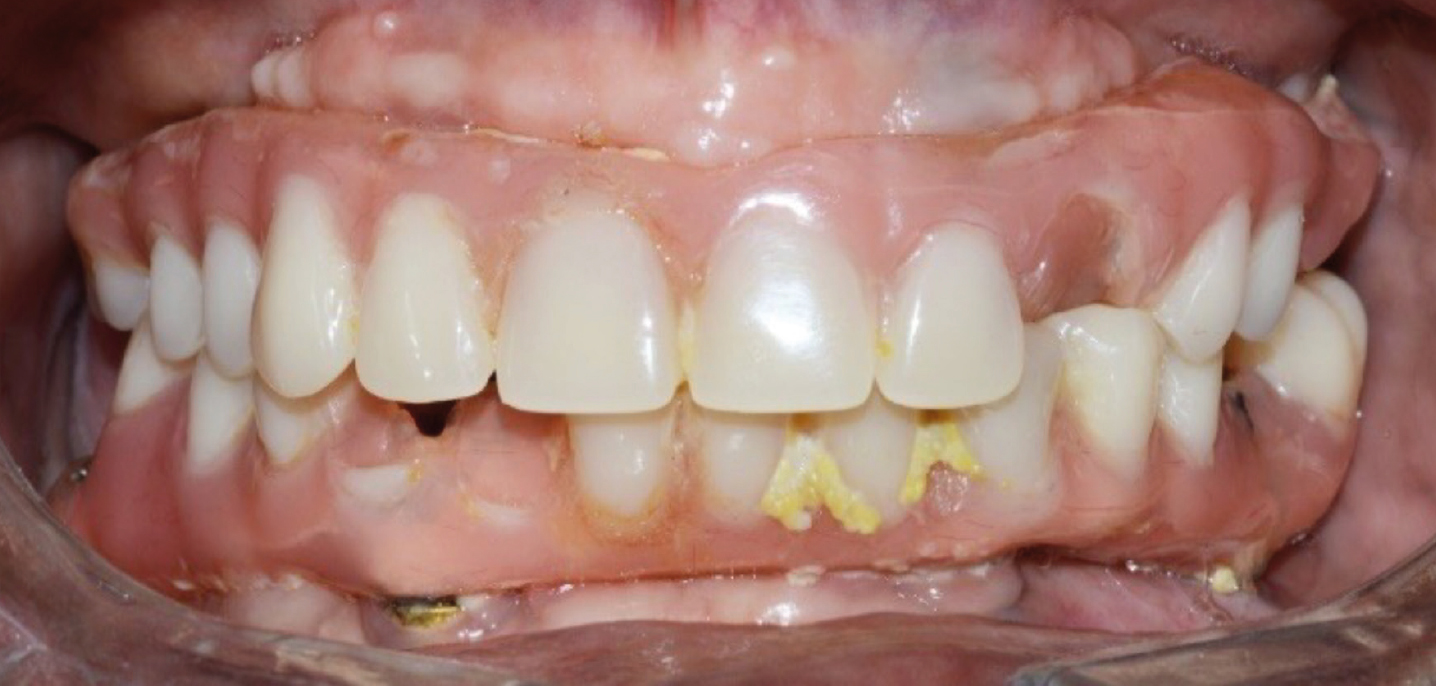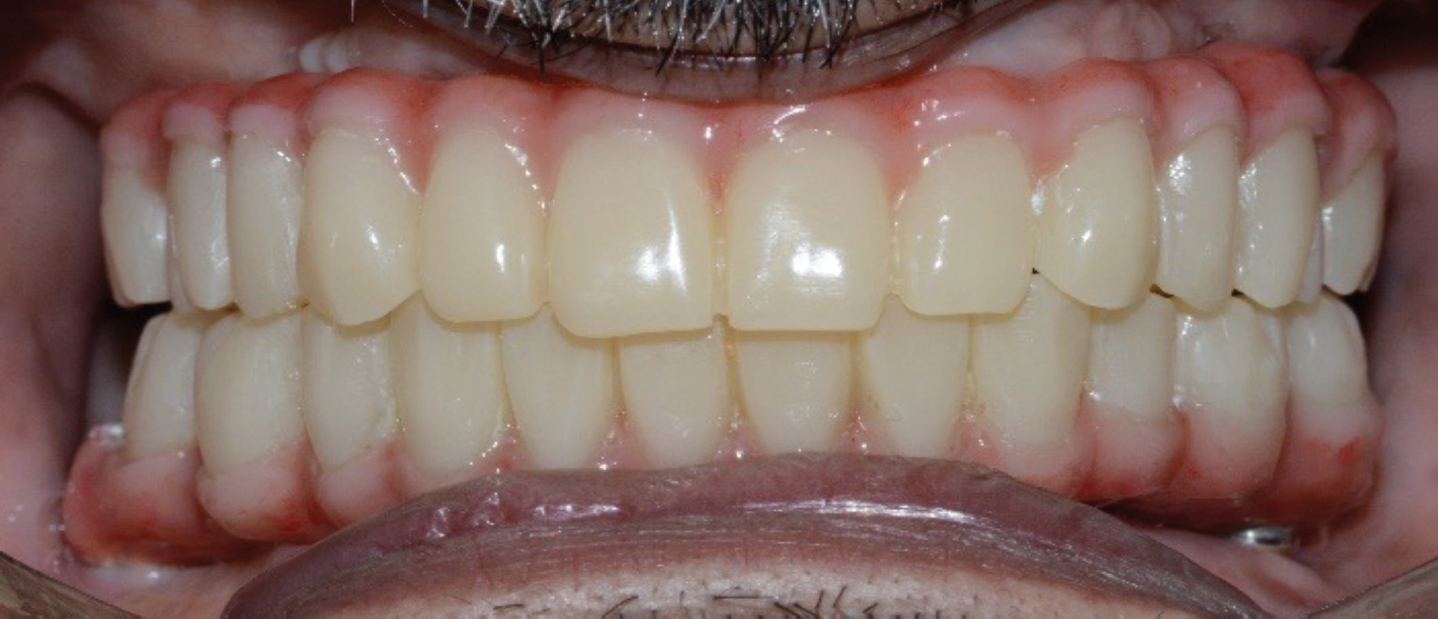Article
Complete-arch monoblock hybrid prostheses with high impact polymer composite (HIPC): a clinical report
A 72-year-old male patient presented with the complaint of repeated debonding of acrylic resin teeth from his hybrid prostheses. He had been wearing this prostheses, supported by five implants in the maxilla and mandible each since the past five years. Despite multiple repairs, the patient continued to experience debonding issues. Clinical evaluation showed that the denture teeth were worn out and fractured and there was a loss of vertical dimension, poor occlusal contacts, and unfavourable aesthetics (Figure 1). To resolve the issue, the patient was presented with an option to replace the acrylic denture base component with high impact polymer composite (breCAM. HIPC, Bredent, Germany) supported on the existing titanium mesostructure.1 The acrylic teeth were trimmed, wax occlusal rims were fabricated and modified to provide proper occlusal plane, lip, and cheek support. The final prostheses were made using a dental CAD software and a single piece restoration was milled from the breCAM.HIPC block. The gingival portion was layered with a pink composite resin. After trying the prostheses in the patient's mouth, the occlusal scheme and aesthetics were found to be acceptable. Following the insertion of prostheses, the patient was given instructions for maintaining their hygiene (Figure 2).


At the 1-year follow-up, the patient reported improved masticatory performance and no biological or prosthetic complications, such as debonding or occlusal wear, were observed.
The development of implant technology over the years has enabled the fabrication of complete-arch fixed, implant-supported prostheses for the completely edentulous patient with hybrid prostheses being its early and economical form.2 Despite the benefits of hybrid prostheses, various complications have been reported in the literature, the most frequent being the debonding of teeth from the denture base resin.3 For this patient, a monoblock HIPC superstructure was used in place of conventionally used materials like zirconia. HIPC is a cross-linked composite with physical and mechanical properties improved through high temperature and pressure manufacturing. This newer material offers improved wear resistance as compared to PMMA. In addition to this, its fabrication in the form of monolithic restoration makes it less susceptible to delamination and fracture due to its inherent strength and lack of interfaces. Further clinical studies over a longer term are required to assess the effectiveness of this new material, but its superior properties compared to PMMA suggest that it may serve as a suitable material for long term interim prostheses.
